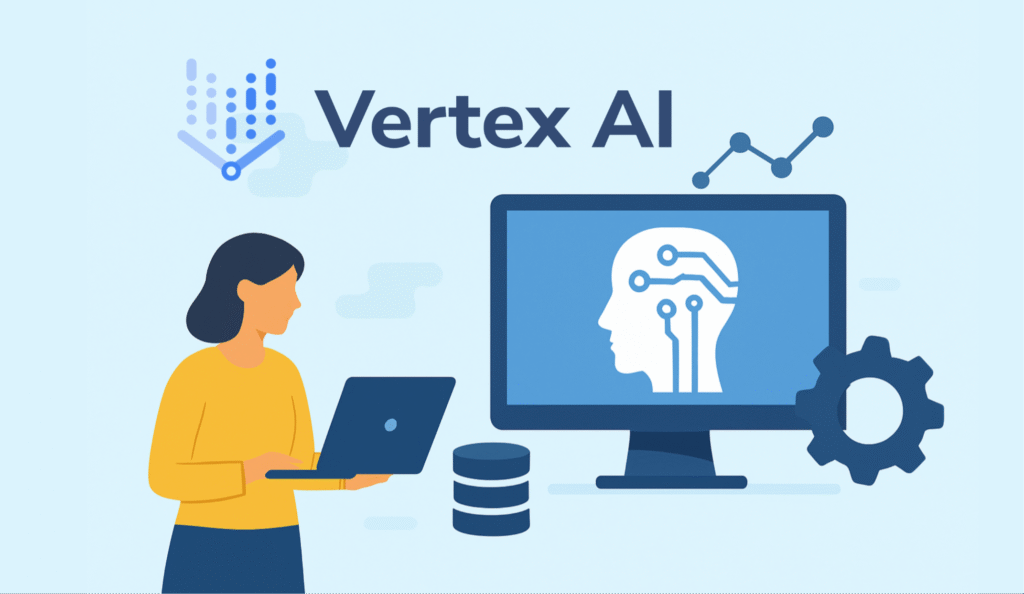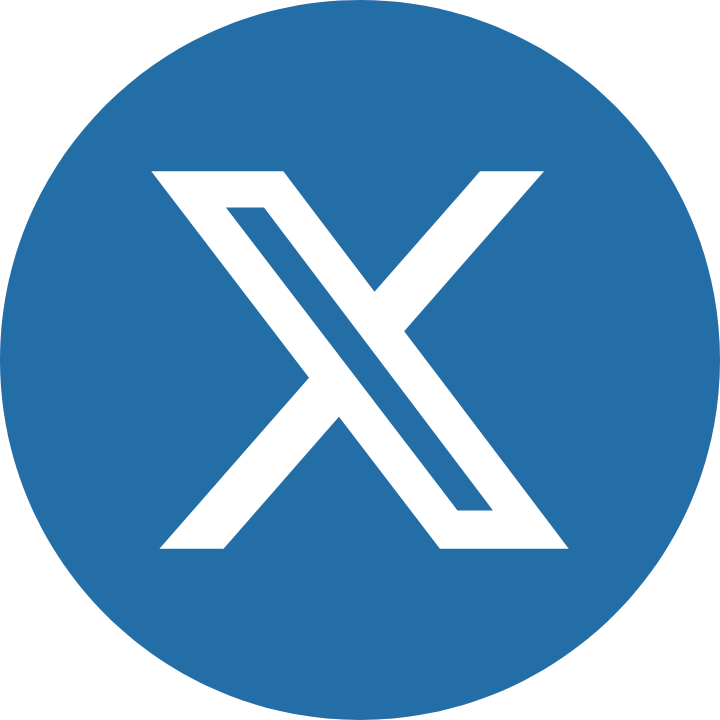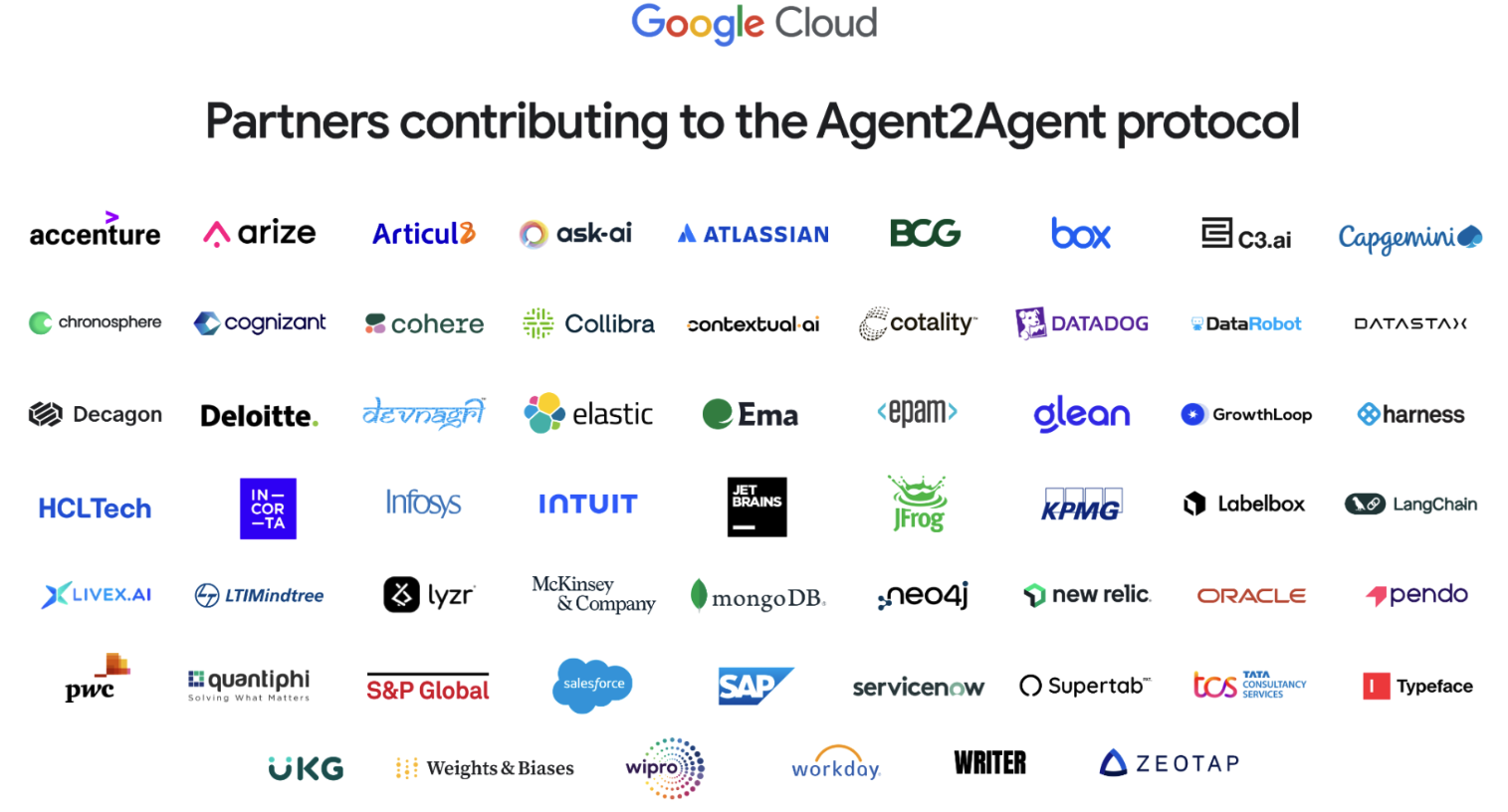Table of Content
- What Is an AI Platform?
- Building Your AI Platform with Vertex AI
- Vertex AI: A Closer Look at Capabilities
- Key Generative AI Models in Vertex AI
- Agent Ecosystem
- Vertex AI’s Agentic Framework
- NotebookLM
- Deep Research Agent
- Vertex AI Search
- Customer Engagement Suite
- BigQuery
- Types of Agents
- Securing Your AI on Vertex AI with Google’s Unified Security Approach
- Krasamo’s AI Services
As organizations increasingly embrace AI, choosing the right platform is no longer just about features—it’s a strategic decision. You need a solution that scales with your growth, adapts to unique workflows, and supports custom, domain‑specific solutions.
Google Cloud’s Vertex AI delivers an end-to-end environment for building, deploying, and operating ML and multi-agent systems at enterprise scale. Whether you’re handling proprietary data, navigating strict compliance, or building highly specialized applications, Vertex AI gives you the flexibility and control to succeed.
This paper aims to provide business stakeholders in medium to large enterprises with an overview of Vertex AI, highlighting its core capabilities and strategic value. Our goal is to offer a foundational understanding that serves as a starting point for discussing how Krasamo, as your implementation partner, can help you leverage Vertex AI to solve specific challenges and drive innovation.
What Is an AI Platform?
An AI platform is a unified environment that supports the entire machine‑learning and deep‑learning lifecycle—from data ingestion through model deployment and monitoring—so teams can focus on solving business problems instead of managing infrastructure.
Core Components
- Data pipelines: Ingestion, preprocessing, and transformation
- Model development tools: AutoML, Python SDKs, Jupyter notebooks, TensorFlow, PyTorch
- Training infrastructure: Scalable GPU and TPU clusters
- Model registry & versioning: Experiment tracking and reproducibility
- Deployment options: Real‑time APIs, batch jobs, and edge inference
- Monitoring & retraining: Performance tracking, drift detection, and automated retraining
- MLOps integrations: CI/CD pipelines, automation, and collaboration frameworks
By abstracting away infrastructure complexity and unifying these components, AI platforms make advanced analytics accessible to a broader range of users across the organization.
The Importance of Customization
Every business has different data sources, workflows, and compliance obligations. A successful AI platform must be adaptable. Customization allows you to:
- Connect proprietary data securely
- Embed domain-specific knowledge into models
- Integrate with internal tools (e.g., CRMs, ERPs)
- Deploy flexibly—via real‑time APIs, batch jobs, or edge devices
Building Your AI Platform with Vertex AI
Google Cloud’s Vertex AI is the platform of choice for organizations because it delivers everything needed to build, deploy, and scale intelligent, multi‑agent systems:
Vertex AI offers an optimized core that delivers high quality backed by cutting-edge research and infrastructure. From high‑throughput databases to state‑of‑the‑art models enhanced through Google Search grounding capabilities, it gives developers the broadest, enterprise‑ready toolset for creating purpose‑built agents and orchestrating complex agent-based ecosystems.
It offers multi‑cloud integration that allows you to adopt AI agents without disrupting your existing IT landscape. Seamlessly connect to your databases, document stores, and enterprise applications—even leverage models or agents from other providers—to accelerate time‑to‑value.
For organizations with the most stringent requirements around data sovereignty, security, privacy, and regulation, Vertex AI provides a platform that lets you innovate freely while safeguarding data and intellectual property. Built‑in controls and compliance frameworks ensure your AI deployments meet global standards.
At its heart, Vertex AI is powered by Google’s advanced AI infrastructure core—ready to support your most ambitious AI initiatives, including the development of SaaS applications powered by intelligent agents.
To turn strategy into action, follow these ten practical steps to build your AI capabilities on Vertex AI:
1. Define Business Objectives and Use Cases
- Identify high‑value AI opportunities (e.g., customer service, forecasting, fraud detection)
- Clarify desired outcomes and success metrics (ROI, accuracy, automation impact)
2. Assess Data Assets and Infrastructure
- Audit internal and external data sources
- Ensure data is accessible, high quality, and labeled appropriately
- Evaluate infrastructure for scalability, storage, and governance
3. Choose Your Technology Stack
- Decide on cloud vs. on‑prem vs. hybrid setups
- Select tools like Vertex AI and complementary services (BigQuery, TensorFlow, Kubeflow)
- Consider interoperability with your existing tech stack
4. Set Up Data Pipelines and Feature Stores
- Build robust pipelines for ingestion, transformation, and validation
- Establish feature stores for reusable, consistent ML features
5. Enable Model Development Workflows
- Empower different teams:
- Use AutoML for business analysts
- Enable advanced training for data scientists with full code control
- Support experimentation, collaboration, and version control
6. Deploy Models to Production
- Choose deployment modes: real‑time, batch, or edge
- Ensure scalability and resilience with autoscaling, A/B testing, and canary deployments (reduces time‑to‑market and improves reliability)
7. Implement MLOps and Monitoring
- Automate deployments with CI/CD (Cloud Build, GitHub)
- Monitor for drift, performance issues, and degradation
- Use alerts to trigger retraining or human reviews (protects ongoing ROI)
8. Ensure Security, Compliance, and Governance
- Apply role‑based access controls and audit logs
- Maintain traceability and version control for models and data
- Comply with regulations like GDPR, HIPAA, etc
9. Foster Cross‑Functional Collaboration
- Align AI initiatives across:
- Data science and engineering teams
- Business stakeholders and domain experts
- Executive leadership for strategic alignment
10. Continuously Iterate and Scale
- Continuously evaluate models for business impact
- Expand platform capabilities (e.g., LLMs, agents, multimodal input)
- Scale to new use cases and departments
Vertex AI: A Closer Look at Capabilities
One of Vertex AI’s greatest strengths is its end-to-end integration across the ML lifecycle and seamless interoperability with Google Cloud computing services. Here’s a breakdown of key capabilities:
| Category | Capabilities |
| Data Ingestion & Preparation | – Ingest from BigQuery, Cloud Storage, or third-party sources – Orchestrate transformations with Vertex Pipelines |
| Custom Model Training | – AutoML for no-code users – Custom training jobs using TensorFlow, PyTorch, or scikit-learn – Support for pre built and custom containers |
| Hyperparameter Tuning & Experiment Tracking | – Automated tuning (Bayesian optimization) – Vertex AI Experiments for tracking metrics and versions – TensorBoard integration |
| Model Deployment Customization | – Real-time endpoints with autoscaling – Batch inference for large datasets – Edge deployment via Vertex AI Edge Manager – A/B testing and canary releases (through configuration and integration with other Google Cloud services) |
| MLOps & Workflow Automation | – CI/CD pipelines using Cloud Build and GitHub/GitLab – Kubeflow-based pipelines – Built-in model monitoring |
| Custom APIs & Integration | – Deploy custom APIs with Cloud Functions or Cloud Run – Integrate with Vertex AI Search, Dialogflow, Looker, BigQuery ML, and Dataform |
Key Generative AI Models in Vertex AI
Here’s an overview of the key generative‑media models you can access through Vertex AI:
- Gemini
Google’s flagship multimodal foundation model family—available in versions like 2.5 Pro and Flash—is designed for high‑precision text understanding, reasoning, code generation, and multimodal tasks (e.g., combining text, images, and structured data). Gemini serves as the “thinking” core behind conversational agents, complex reasoning workflows, and generative pipelines in Vertex AI’s Model Garden Google Cloud. - Imagen 3
A state‑of‑the‑art text‑to‑image generator that produces photorealistic, high‑resolution images from natural‑language prompts. Imagen 3 delivers richer lighting, finer detail, and fewer artifacts than previous models, with built-in safety filters for sensitive content. It’s exposed via Vertex AI’s Generative‑AI APIs and Model Garden for instant prototyping and deployment. - Chirp 3
Google’s “Instant Custom Voice” model within the Text‑to‑Speech API, Chirp 3 lets you create customized, high‑fidelity voices from as little as 10 seconds of sample audio. Once trained, these voices can be invoked via Vertex AI to synthesize natural, expressive speech at scale—ideal for assistants, audiobooks, and personalized voice‑UX. - Lyria
A text‑to‑music model now in private preview on Vertex AI that composes original, 30–60 second musical clips in a variety of genres and moods. With Lyria, you can generate background scores, sonic branding, and adaptive soundtracks entirely from descriptive prompts—completing the suite of generative media modalities on Vertex AI. - Veo 2
An advanced text‑to‑video engine capable of producing real‑world‑physics‑aware clips (up to several seconds at high resolution) directly from text or image prompts. Veo 2 supports camera‑pose control, in‑painting/out‑painting, and SynthID watermarking for traceability, all accessible via the Video Generation APIs and Model Garden in Vertex AI.
Together, these five models empower the creation of end‑to‑end generative pipelines—text, image, speech, music, and video—within Vertex AI’s unified platform, through native tools and early-access integrations.
Agent Ecosystem
Vertex AI combines purpose‑built TPUs with a broad portfolio of accelerators tuned for both training and inference. It also features a unified AI stack that abstracts away hardware complexity. Under the hood, high‑throughput, low‑latency storage and networking ensure your data moves as fast as your models can train or serve (data to AI). A single software layer—spanning orchestration, autoscaling, and runtime—lets you transition seamlessly between hardware generations without rewiring your pipelines.
On top of that, Vertex AI’s unified environment integrates data ingestion, feature management, experiment tracking, and hyperparameter tuning into one pane of glass, and it includes built-in model monitoring to detect drift and trigger retraining automatically. (You can integrate these monitoring alerts with other Google Cloud services to automate retraining).
Developers get everything they need—SDKs, APIs, orchestration tools, and CI/CD integrations—to build, test, and manage fleets of AI agents at scale. Its integration capabilities allow developers to build secure pathways to company data, enabling agents to search and interact with documents and internal systems. This grounding in proprietary data is key to driving highly relevant and valuable AI agent and AI SaaS workflows.
Beyond custom workflows, a growing collection of pre‑built agent resources—such as sample agents, templates, and patterns—helps accelerate adoption. These components allow organizations to rapidly deploy and iterate on agentic solutions without starting from scratch.
Many of Google Cloud’s service partners are building purpose‑built agents on Vertex AI to solve industry‑specific challenges. By leveraging Vertex AI’s Agent Development Kit, pre‑packaged agent catalog, and scalable infrastructure, these partners can rapidly deliver end‑to‑end AI assistants—whether for secure file collaboration, automated threat detection, no‑code ticketing workflows, or large‑scale creative production—demonstrating how the platform accelerates time‑to‑value and fosters innovation across diverse business scenarios.
Vertex AI’s Agentic Framework
Google’s end‑to‑end architecture provides an agentic framework that allows for defining, connecting, and operating fleets of AI agents as first‑class workloads. These components abstract away boilerplate integration work, enforce consistent interfaces, and provide out‑of‑the‑box orchestration, making it far easier for organizations to adopt, extend, and govern complex multi‑agent systems.It consists of four main layers:
1. Agent Development Kit (ADK):
An open‑source SDK that lets you package “thinking” behaviors—reasoning, planning, tool‑use, memory—into discrete agents without building each integration from scratch.This kit supports protocols that allow agents to communicate with each other:
- Model Context Protocol standardizes how any agent fetches data or invokes tools (APIs, databases, search) via a uniform interface.
- Agent2Agent Protocol enables heterogeneous agents—regardless of the underlying model or framework—to discover one another, exchange messages, and orchestrate multi‑step workflows collaboratively.
2. Agentspace:
A managed runtime and catalog where end users can browse, compose, and deploy both pre‑packaged and custom agents. It handles authentication, security policies, versioning, and audit trails, so businesses can roll out new agent‑driven workflows across their enterprise in a governed way.
3. Underlying AI & Infrastructure:
Powered by Google’s multimodal Gemini models, high‑performance compute (TPUs/GPUs), storage, and networking, plus built-in monitoring and compliance controls. This layer ensures agents run reliably, scale elastically, and adhere to security/regulatory requirements.
Model Gardens
Vertex AI’s Model Gardens are curated repositories of over 200 foundation models—spanning Google’s own research (e.g. Gemini, Imagine, Veo 2), popular third‑party offerings, and leading open‑source variants. Rather than forcing you to hunt across disparate registries, Model Gardens give you a one‑stop catalog where you can discover, preview, and deploy models with a single click or API call.
To fully leverage Generative AI, it’s crucial to combine public data with your organization’s unique proprietary data. Vertex AI integrates with NetApp’s AI-ready storage to power Retrieval Augmented Generation (RAG) operations. This integration allows you to securely augment public data with your private data stored in Google Cloud NetApp Volumes, resulting in more relevant and accurate insights from your LLM workloads.
Grounding in Vertex AI
To ensure factual, reliable outputs, Vertex AI “grounds” its responses by pulling in real‑world data at inference time. You need to explicitly configure and enable it. Vertex AI requires you to take specific steps to set up grounding.You can configure grounding against:
- Google Search (leveraging up‑to‑the‑moment web knowledge)
- Your Enterprise Data (databases, document stores, NetApp volumes)
- Google Maps (for location‑based context)
- Third‑Party Sources (via custom connectors)
This hybrid approach tightly couples the model’s generative capabilities with authoritative sources, dramatically improving accuracy and reducing hallucinations.
Learn more about Grounding https://cloud.google.com/vertex-ai/generative-ai/docs/model-reference/grounding
NotebookLM
NotebookLM is Google’s AI‑powered “notebook” and research assistant that lets you upload documents (PDFs, Google Docs, Slides, even YouTube transcripts) and then converse with them—summarizing key points, answering questions, generating study guides or audio overviews, and brainstorming new connections—all grounded in your own sources.
Under the hood, NotebookLM is built on Google’s Gemini foundation models (the same LLMs available in Vertex AI’s Model Garden), and when used in an enterprise setting it runs on Google Cloud with the same security, networking, and governance controls you get with Vertex AI Workbench and related services. NotebookLM Plus for Enterprise includes the following capabilities:
- Runs on the same high-performance, autoscaling compute infrastructure that powers Vertex AI, allowing it to handle large-context analyses and audio-summary generation without requiring users to manage the underlying hardware.
- Integrates with your Google Cloud identity, IAM, and VPC‑SC policies for data protection and compliance
- Surfaces in the Google Cloud Console alongside Vertex AI tools, so teams can manage notebooks and NotebookLM projects within the same unified AI platform
In this way, NotebookLM sits on top of—and extends—the core Vertex AI ecosystem, using its models, compute, and security to deliver a seamless, enterprise‑ready research‑and‑note‑taking experience.
Deep Research Agent
Deep Research Agent is a purpose‑built AI assistant—deployed via Vertex AI’s Agent Space—that autonomously investigates complex topics on your behalf. Once given a high‑level goal (e.g. “analyze industry trends”), it dynamically constructs a multi‑step research plan, pulls in information from both Google Search and your internal data sources (docs, databases, intranet), and adapts its plan in real time based on what it discovers. The result is a structured, executive‑ready report complete with source links and summaries—all without manual data gathering or synthesis.
Vertex AI Search
Vertex AI Search is Google’s enterprise‑grade, multimodal search service embedded within the Vertex AI platform. It combines Google’s foundational search technology with semantic understanding to let users query both text and images—across websites, internal document repositories, and databases—in natural language. With features like relevance tuning, vector‑based similarity, and built-in grounding against your own data, Vertex AI Search delivers highly accurate, context-aware results that power everything from customer support bots to specialized industry search applications.
Customer Engagement Suite
Google Cloud’s Customer Engagement Suite is a prime example of how Vertex AI’s foundational capabilities are applied to solve specific business challenges. It is a purpose‑built offering for delivering conversational support and self‑service across channels—web, mobile apps, call centers, in‑store kiosks, and more. It bundles:
- Pre‑built agent templates for common functions (order tracking, account inquiries, appointment scheduling)
- Seamless CRM & telephony integrations (e.g., ServiceNow, Salesforce, third‑party telephony)
- Multimodal interfaces (voice, chat, text, even video)
- Enterprise‑grade security & compliance controls and analytics
By abstracting away the plumbing, the suite lets businesses spin up new customer‑facing agents in days rather than months, while ensuring consistent brand experience and deep data integration.
BigQuery
BigQuery is presented not just as a data warehouse but as a full data‑science platform that “connects everything” by ingesting structured tables, unstructured text, logs, images, videos, and even live SaaS feeds into a single, multimodal analytics engine. Leveraging its built-in AI query capabilities (powered by Gemini), BigQuery can automatically extract information from PDFs, generate features, and run time‑series forecasts—all within the same environment.
BigQuery increasingly provides functions and integrations that allow these data science and AI tasks using standard SQL within the BigQuery environment. This makes these capabilities feel native to BigQuery, even if they leverage other underlying Google Cloud services.
With seamless integrations and specialized agents for data engineers, scientists, and analysts, BigQuery enables end‑to‑end workflows from raw data through exploratory analysis, modeling, and production‑ready insights—so you truly have “one source of truth” for both analytics and AI.
By embedding AI directly into a cloud-native warehouse like BigQuery, organizations break down traditional silos—ingesting structured and unstructured data, logs, and live streams into a single platform. Modern BigQuery architectures automatically manage storage and compute, embed generative AI alongside SQL and BI tools, and self-optimize to surface insights with minimal manual intervention. This integration—from data to AI—transforms slow, multi-step analytics into an autonomous, end-to-AI pipeline.
Types of Agents
Within Vertex AI and Agent Space, Google offers several specialized agent categories:
- Customer Agents
Designed for front‑line support, these agents can handle omni‑channel inquiries, pull in user context from CRMs or transaction systems, and take actions (e.g., process returns, update orders). They deliver human‑like dialogue and can escalate to live agents when needed. - Creative Agents
Tailored for marketing, design, and content teams—these agents generate visuals, draft copy, compose music or video storyboards, and help streamline large‑scale creative production workflows. - Data Agents
Embedded within BigQuery or Analytics platforms, data agents understand your schema and business KPIs. They can:- Ingest & clean raw tables, logs, and documents
- Perform exploratory analysis via natural‑language queries
- Build and run ML workflows (forecasting, classification)
- Generate dashboards and reports automatically
This empowers analysts and data scientists to move from question to insight in minutes
- Co‑Assist / Developer Agents
Integrated into IDEs and CI/CD pipelines, these agents help with code generation, refactoring, testing, and release automation—accelerating the software development lifecycle. - Security & Compliance Agents
Focused on threat detection, incident triage, and policy enforcement, they sift through logs, surface anomalies, and even suggest remediation steps.
Securing Your AI on Vertex AI with Google’s Unified Security Approach
Building and deploying enterprise-grade AI solutions on Vertex AI also means benefiting from Google Cloud’s comprehensive security posture, exemplified by Google Unified Security (GUS). While Vertex AI itself incorporates robust security features for your models and data, GUS – integrating expertise from Mandiant – provides an overarching, AI-powered security fabric that further protects your entire cloud environment, including your Vertex AI workloads.
How Vertex AI Benefits from this Unified Security:
- Enhanced Protection for AI Assets: GUS capabilities like “Model Armor” specifically help safeguard your AI systems built on Vertex AI, monitoring for adversarial attacks or anomalous activity against your models and data. This complements Vertex AI’s own security controls.
- Secure Data and Infrastructure: As your Vertex AI solutions interact with data and run on Google Cloud infrastructure, they are protected by GUS’s continuous threat intelligence, exposure management, and automated threat detection and response capabilities.
- Context-Rich Security Operations & Expert Response: Google Unified Security integrates Gemini AI to enhance analyst workflows with contextual insights, natural language summaries, and automated triage support. Combined with Mandiant’s world-class incident response expertise, this provides powerful assistance when deep investigation or crisis management is needed for threats impacting your AI deployments.
- Holistic Compliance and Governance: The integrated security controls and posture management within GUS help ensure that your AI initiatives on Vertex AI adhere to stringent compliance and governance standards.
In essence, while you focus on innovation with Vertex AI, Google’s unified security approach, including GUS and Mandiant expertise, works to provide proactive, intelligent, and converged defenses for your AI applications and the broader environment they operate in, ensuring your valuable AI assets are well-protected.
Krasamo’s AI Services
By following a structured approach to platform development and leveraging Vertex AI’s capabilities, organizations can build robust, production‑ready AI systems that evolve over time and drive meaningful business outcomes.
Krasamo is a US‑based AI development company that creates software solutions and has extensive experience deploying on the Vertex AI ecosystem. We build AI agents on Vertex AI—leveraging the Agent Development Kit, pre‑packaged agents, and open protocols—and connect them to customers’ existing data sources and applications via built‑in storage connectors.
By working with an experienced development partner, you accelerate time‑to‑value, deploy production‑ready, enterprise‑grade AI agents across industry verticals, and drive broad adoption.
References:
General guidance on conducting A/B experiments: https://cloud.google.com/retail/docs/a-b-testing
Supercharge security with AI: https://cloud.google.com/security/ai
What’s new with BigQuery AI and ML?: https://cloud.google.com/blog/products/data-analytics/bigquery-adds-new-ai-capabilities













I’ve seen similar projects in my AI in cloud coursework – using language models to generate multimedia content is a fascinating area. It’s great that Vertex AI is pushing the boundaries with Lyria and Veo 2. The ability to create original music and video clips from text prompts is definitely a game-changer for industries like advertising and entertainment. One thing I’d love to see explored further is how these models can be integrated with other AI tools to enable more seamless content creation experiences.